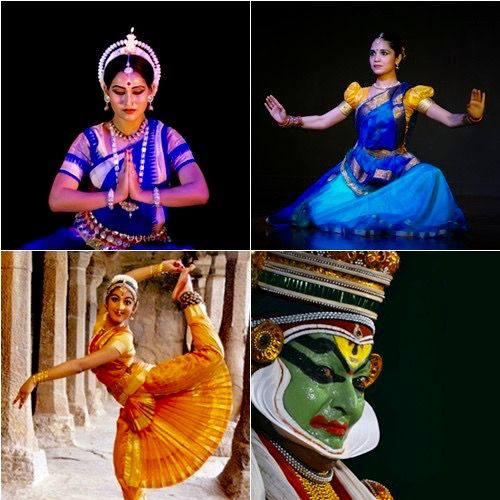Kathak: The Graceful Tale of Rhythm and Expression

Kathak, one of India’s most cherished classical dance forms, has its roots in the northern state of Uttar Pradesh. Known for its intricate footwork, expressive storytelling, and rhythmic spins, Kathak has evolved from ancient temple rituals to royal courts and contemporary stages. This dance form captures the essence of Indian culture, blending spirituality with artistic finesse.
Historical Origins and Evolution
The word "Kathak" is derived from "Katha," meaning story, and "Kathakar," meaning storyteller. Initially performed by wandering bards known as Kathakars, the dance was a means of narrating mythological tales and folklore. With the advent of Mughal rule in India, Kathak transitioned into the royal courts, adopting Persian influences and becoming a sophisticated form of entertainment.
Today, Kathak is performed worldwide, captivating audiences with its delicate blend of rhythm, expression, and storytelling. The dance has three main gharanas (schools)—Lucknow, Jaipur, and Banaras—each with distinct styles and emphasis.
Elements of Kathak Dance
Kathak is characterized by its dynamic footwork, fluid movements, and expressive facial expressions. The dance can be categorized into two primary aspects:
- Nritta (Pure Dance)
- Focuses on rhythm, technique, and intricate footwork (tatkaar).
- Involves spins (chakkars) and rhythmic patterns synchronized with classical music.
- Nritya (Expressive Dance)
- Emphasizes storytelling through gestures (mudras) and facial expressions (abhinaya).
- Narrates stories from Hindu epics like the Ramayana and Mahabharata, as well as romantic tales of Radha and Krishna.
A Kathak performance typically begins with a vandana (invocation), followed by rhythmic patterns like thaat, amad, tode, and tihai. The performance may also include a bhajan (devotional song) or thumri (light classical song), showcasing the dancer's expressive abilities.
Costume and Presentation
Kathak dancers wear traditional attire that reflects the elegance of the dance form. Female dancers often wear lehengas or anarkali suits with intricate embroidery, while male dancers wear kurtas with churidars or dhotis. The costumes are complemented by ornate jewelry, ankle bells (ghungroos), and expressive makeup that highlights the eyes.
Musical Accompaniment
Kathak is performed to Hindustani classical music, using instruments like the tabla (percussion), harmonium, sarangi (string instrument), and flute. The rhythmic cycles (taal) and melodic modes (raag) guide the dancer's movements, creating a harmonious blend of music and dance. The nattuvangam (rhythmic recitation) by the conductor plays a crucial role in maintaining tempo and coordination.
Kathak's Global Influence
Kathak has gained international acclaim, with artists performing on global stages and teaching in dance academies worldwide. Renowned dancers like Birju Maharaj, Sitara Devi, and Kumudini Lakhia have played pivotal roles in popularizing Kathak, blending traditional techniques with contemporary themes.
Kathak is more than a dance; it is a timeless narrative of culture, history, and emotion. From its sacred origins in temple rituals to its grandeur in royal courts, Kathak remains a vibrant and evolving art form. Its intricate footwork, soulful expressions, and rhythmic brilliance continue to enchant audiences, making Kathak a cherished part of India’s rich cultural tapestry.